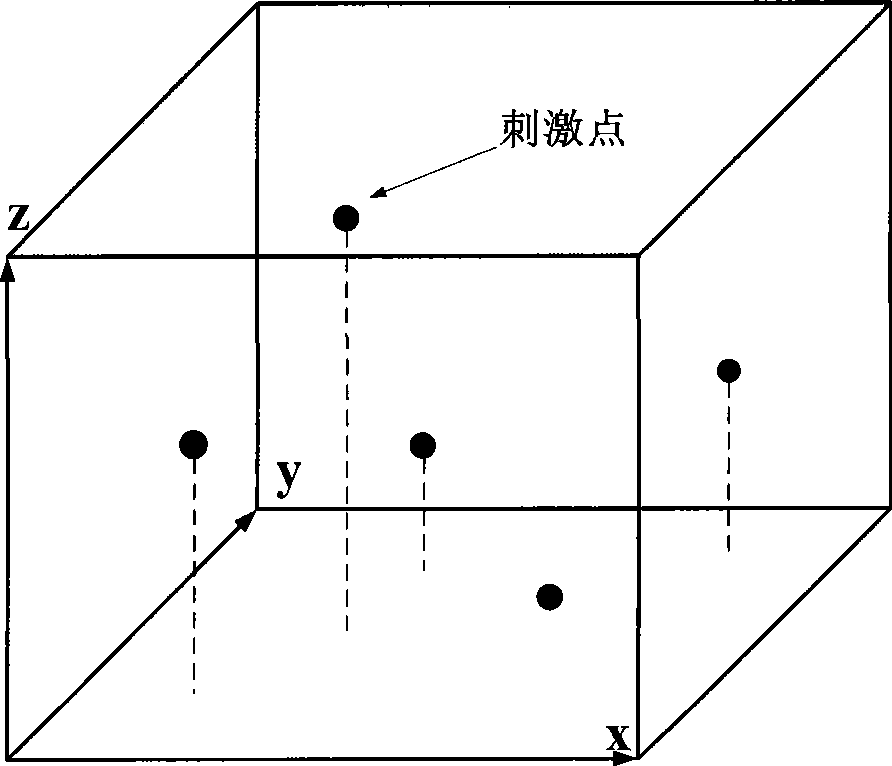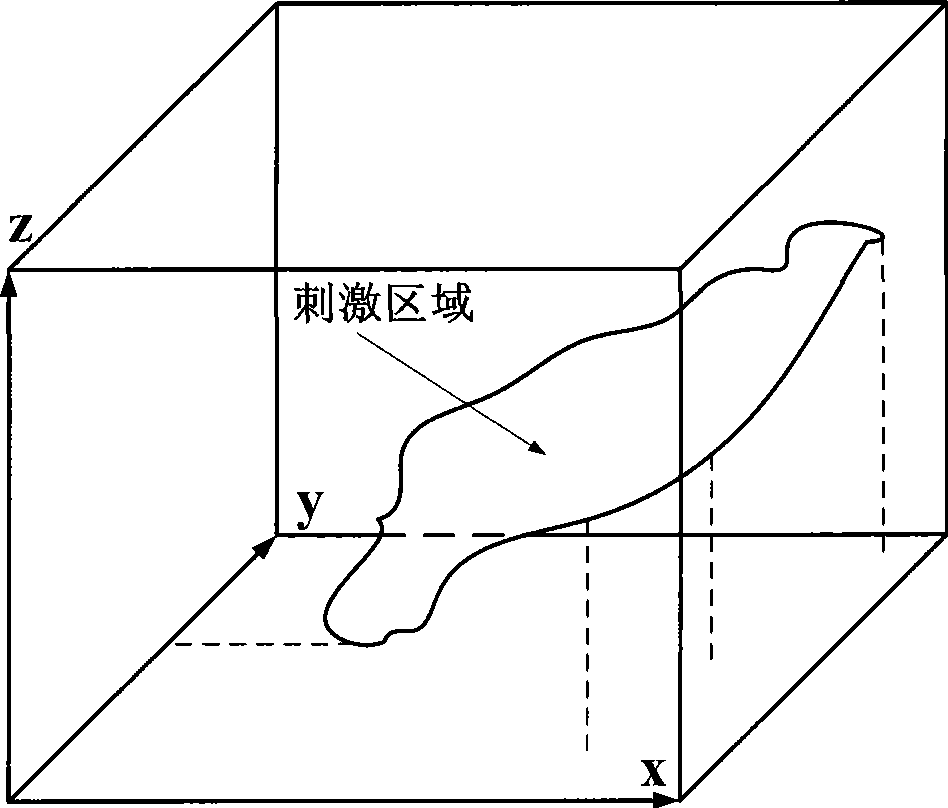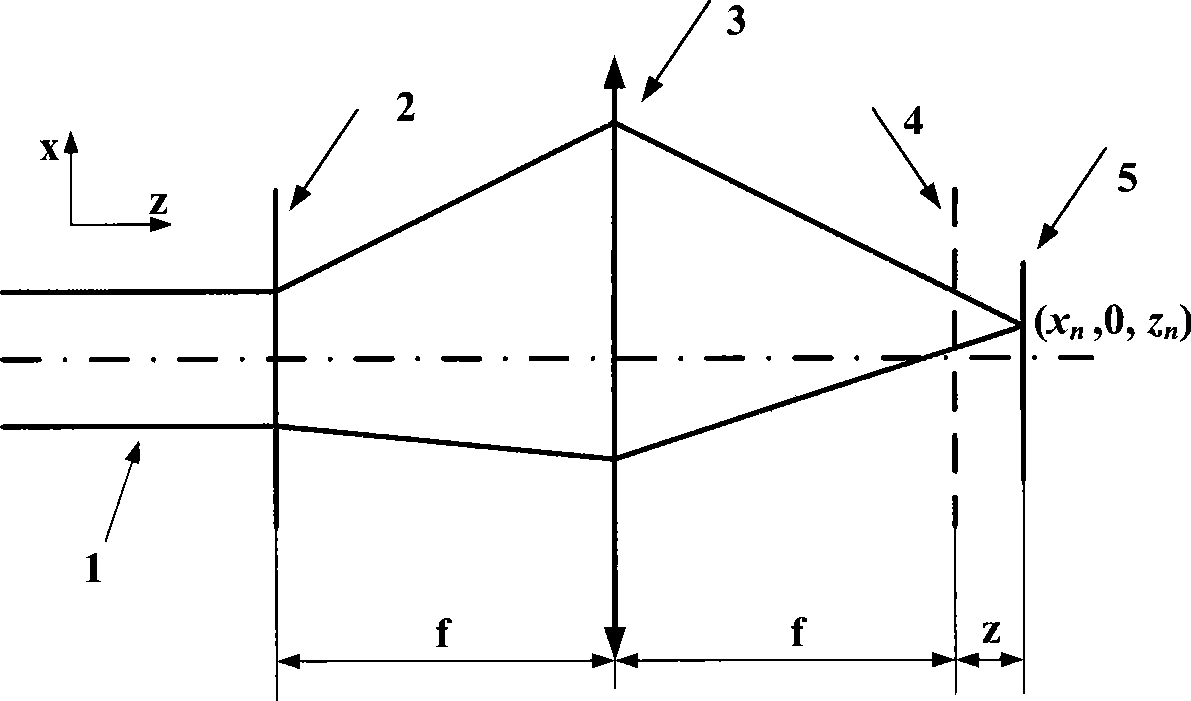Three-dimensional photo-stimulation system
A light stimulation, three-dimensional technology, applied in optics, nonlinear optics, medical science, etc., can solve the limitations of three-dimensional stimulation and other problems
- Summary
- Abstract
- Description
- Claims
- Application Information
AI Technical Summary
Problems solved by technology
Method used
Image
Examples
example 1
[0040] Such as image 3 , the stimulating light source is a 632.8nm He-Ne laser, the spatial light modulator is 512×512, the pixel size is 10μm, and the focal length of the lens is 250mm. When it is necessary to form two stimulation points whose position coordinates are respectively (0.1, 0.1, 50) mm and (-0.1, -0.1, -50) mm, according to formulas (3) to (7), the computer 13 can be input to The phase hologram of the spatial light modulator is shown as Figure 4 , and then put as Figure 4The phase hologram of the phase is input into the spatial light modulator. After the stimulation light passes through the spatial light modulator and the lens, the stimulation points with position coordinates of (0.1, 0.1, 50) and (0.1, 0.1, -50) mm can be formed. . These two stimulation points not only have different horizontal coordinates, but also different axial coordinates.
example 2
[0042] Such as image 3 , the stimulus light source is a 632.8nm He-Ne laser, the spatial light modulator is 512×512, the pixel size is 10μm, and the focal length of the lens is 250mm. When it is necessary to form four stimulus points whose position coordinates are (0.1, 0, 0), (0.2, 0, 0), (0, 0, 50) and (0, 0, 70) mm, according to (3) To (7), the computer 13 can obtain the phase hologram input to the spatial light modulator as Figure 5 , and then put as Figure 5 The phase hologram of the input into the spatial light modulator, after the stimulation light passes through the spatial light modulator and the lens, the position coordinates can be formed respectively (0.1, 0, 0), (0.2, 0, 0), (0, 0, 50) and (0, 0, 70) mm stimulation points. These four points are distributed in different positions in the three-dimensional space.
PUM
 Login to View More
Login to View More Abstract
Description
Claims
Application Information
 Login to View More
Login to View More - R&D
- Intellectual Property
- Life Sciences
- Materials
- Tech Scout
- Unparalleled Data Quality
- Higher Quality Content
- 60% Fewer Hallucinations
Browse by: Latest US Patents, China's latest patents, Technical Efficacy Thesaurus, Application Domain, Technology Topic, Popular Technical Reports.
© 2025 PatSnap. All rights reserved.Legal|Privacy policy|Modern Slavery Act Transparency Statement|Sitemap|About US| Contact US: help@patsnap.com



